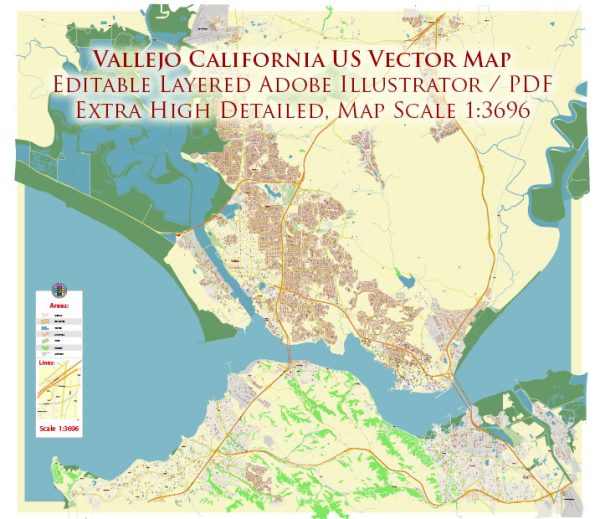Vallejo, located in the northern part of California’s San Francisco Bay Area, has a history of urban development that is closely tied to its strategic location, maritime activities, military presence, and industrial growth. Here’s an overview of key phases in Vallejo’s urban development:
- Early Settlement and Mare Island Naval Shipyard (19th Century):
- Vallejo was one of the first communities established in California during the Mexican era. In 1844, Mariano Guadalupe Vallejo, a Mexican military officer, granted the city’s original land.
- The establishment of Mare Island Naval Shipyard in 1854 significantly influenced Vallejo’s development. Mare Island became the first naval shipyard on the West Coast, contributing to the city’s economic growth and attracting a diverse population.
- Military Influence and Economic Expansion (Late 19th – Early 20th Centuries):
- Mare Island Naval Shipyard played a crucial role during the Civil War and continued to be a major employer and economic driver for Vallejo throughout the late 19th and early 20th centuries.
- The city saw population growth and the development of infrastructure, including schools, churches, and businesses, to support the expanding community.
- World War II and Industrial Boom (Mid-20th Century):
- Vallejo experienced a significant economic boom during World War II due to the expansion of the Mare Island Naval Shipyard and wartime industrial production.
- After the war, the city faced challenges as the naval shipyard scaled back operations, leading to economic adjustments and shifts in the local economy.
- Post-War Suburbanization and Development (Mid-20th Century):
- Like many American cities, Vallejo experienced suburbanization in the post-war period. The construction of highways and increased automobile usage led to the development of suburban neighborhoods.
- Mare Island remained a key naval facility, but changes in military strategy and the closure of some naval facilities impacted Vallejo’s economy in the latter half of the 20th century.
- Base Closure and Economic Challenges (1990s):
- In 1996, the federal government officially closed Mare Island Naval Shipyard as part of the Base Realignment and Closure (BRAC) process. The closure had a significant impact on Vallejo’s economy, leading to job losses and economic challenges.
- Revitalization Efforts and Arts District (21st Century):
- In the 21st century, Vallejo has undergone revitalization efforts to address economic challenges and transform the city. The Mare Island waterfront has been redeveloped, and there have been initiatives to promote tourism and cultural activities.
- The creation of the Vallejo Arts District has brought new energy to the downtown area, with art galleries, studios, and cultural events contributing to the city’s identity.
- Housing and Community Development (Contemporary):
- Vallejo has seen efforts to improve housing options and community development. The city continues to address issues related to economic disparities, infrastructure improvements, and community engagement.
Vallejo’s urban development has been shaped by its historical ties to the military, maritime activities, and industrial growth. In the face of economic challenges, the city has demonstrated resilience and a commitment to revitalization, embracing cultural initiatives and community development to shape its future.


 Author: Kirill Shrayber, Ph.D.
Author: Kirill Shrayber, Ph.D.